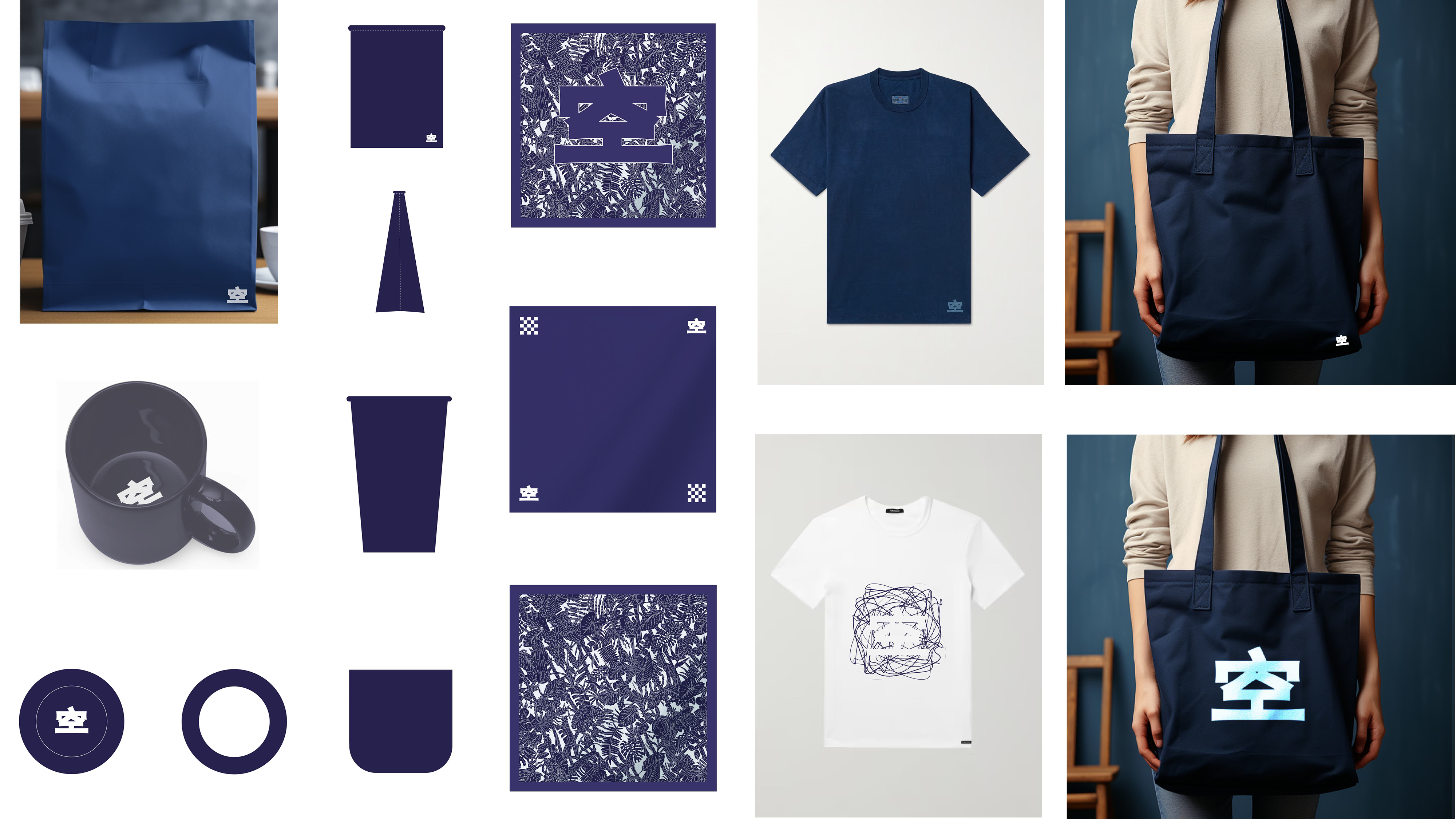Monica Hsieh
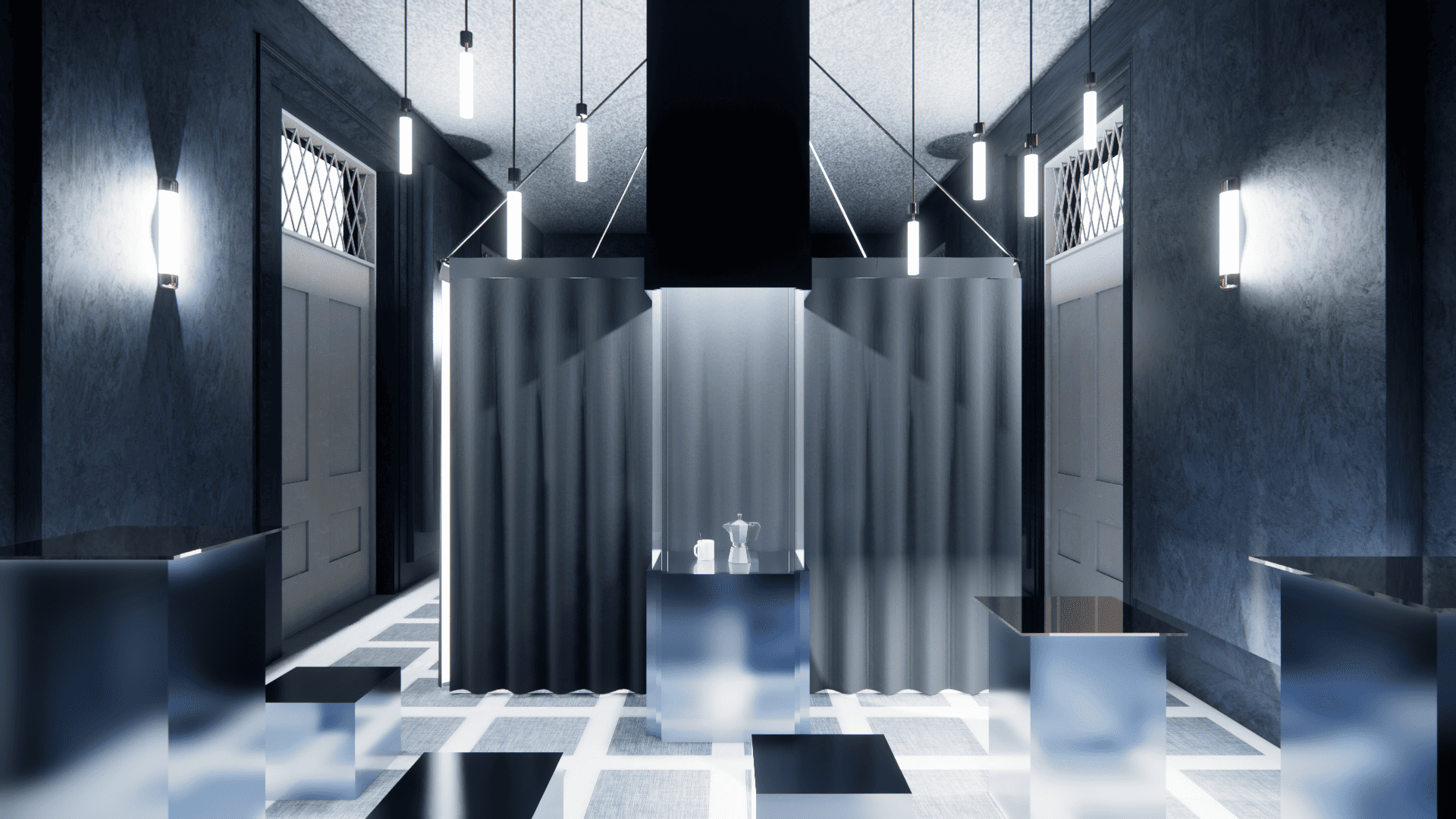
COLO COFFEE: KONG
Popup
More than just a coffee shop
This pop-up shop design combines Syracuse University's School of Architecture with Colombia-based Colo Coffee Shop. Inspired by the concept of a temple, it reimagines the coffee shop as a space for both daily rituals and meditation.
-
2024
-
Workshop Project (Syracuse University)
-
Popup
-
School of Architecture, Syracuse University, Syracuse, NY
-
Michael Speaks, Jiwon Shin, Erin Cuevas
-
Monica Hsieh, Penfeiyu Chen, Lee, Roger Li
Concept and logo design
The logo features the Chinese character "空" (Kong), symbolizing emptiness and evoking a serene, ethereal sound. The deep blue palette bridges the identities of the architecture school and Colo Coffee, creating a tranquil and unified visual identity.
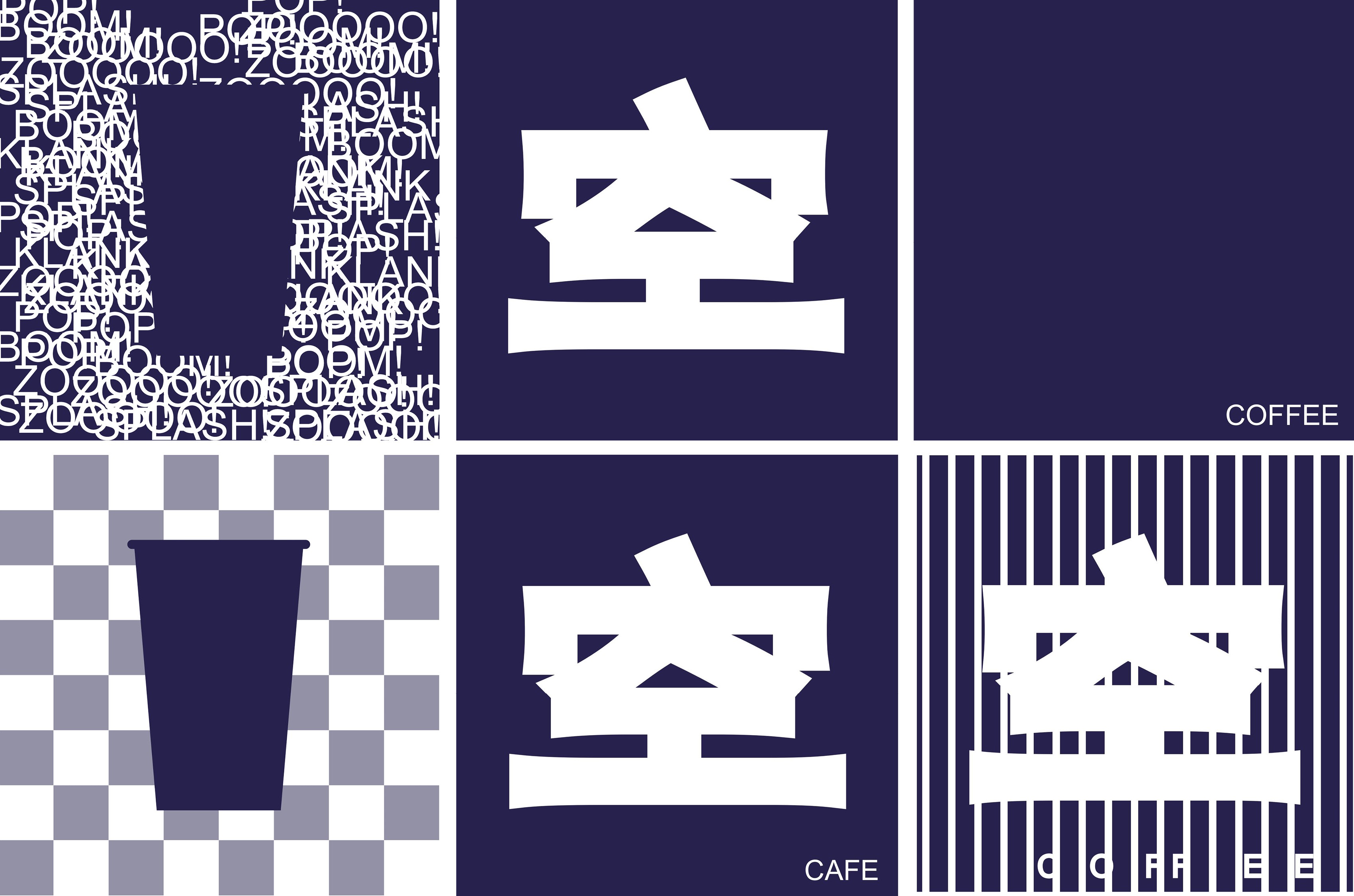
Spatial Typology: Yard and Temple
The plan draws from the spatial typology of Taiwanese temples, dividing the layout into a Yard and a Temple. Inside the Temple, materials define two zones: the quiet Kong Space for meditation and hand-pour coffee, and the Noise Space for espresso brewing and social interaction. Movable furniture allows flexible use and reconfiguration.
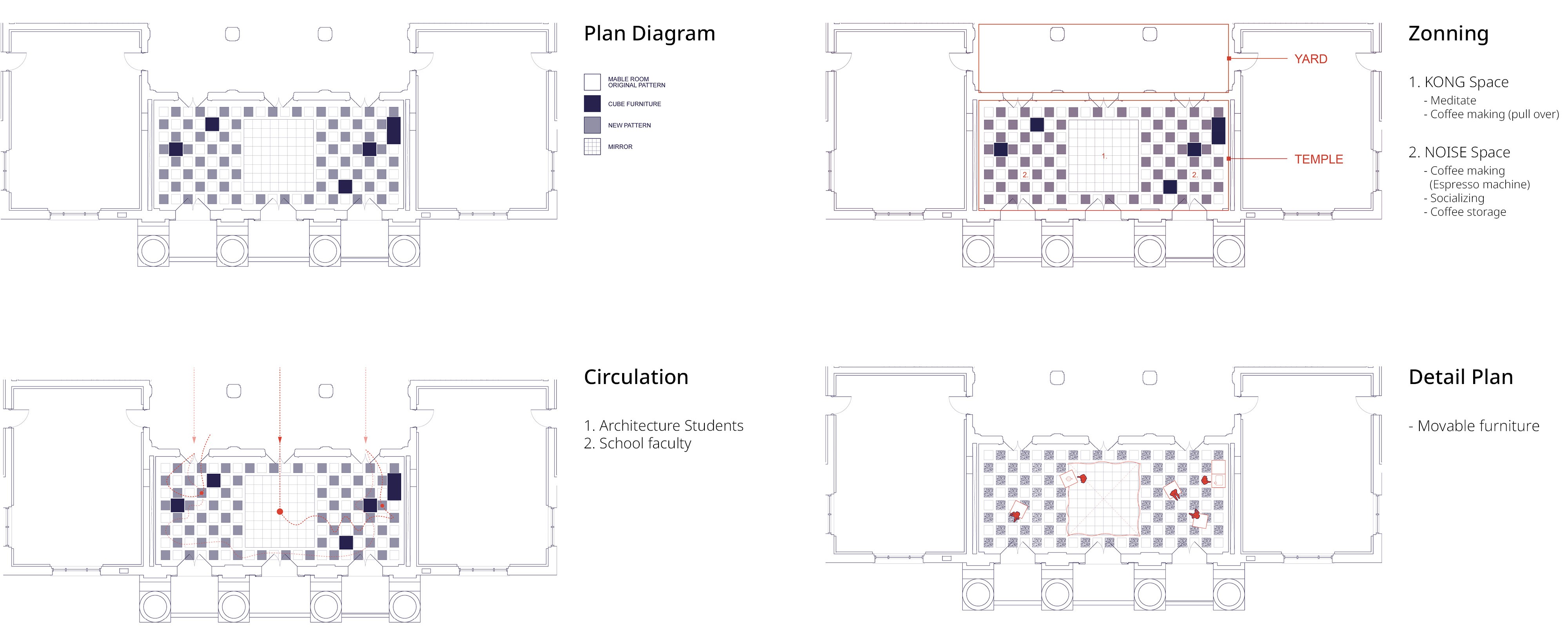
The Core of Emptiness
Inspired by Taiwanese temple typology, the yard serves as a gathering space with furniture extending outward. At the center, the “KONG Space” embodies the concept of hollowing, creating a core for meditation and performance, echoing the logo "空" (Kong).

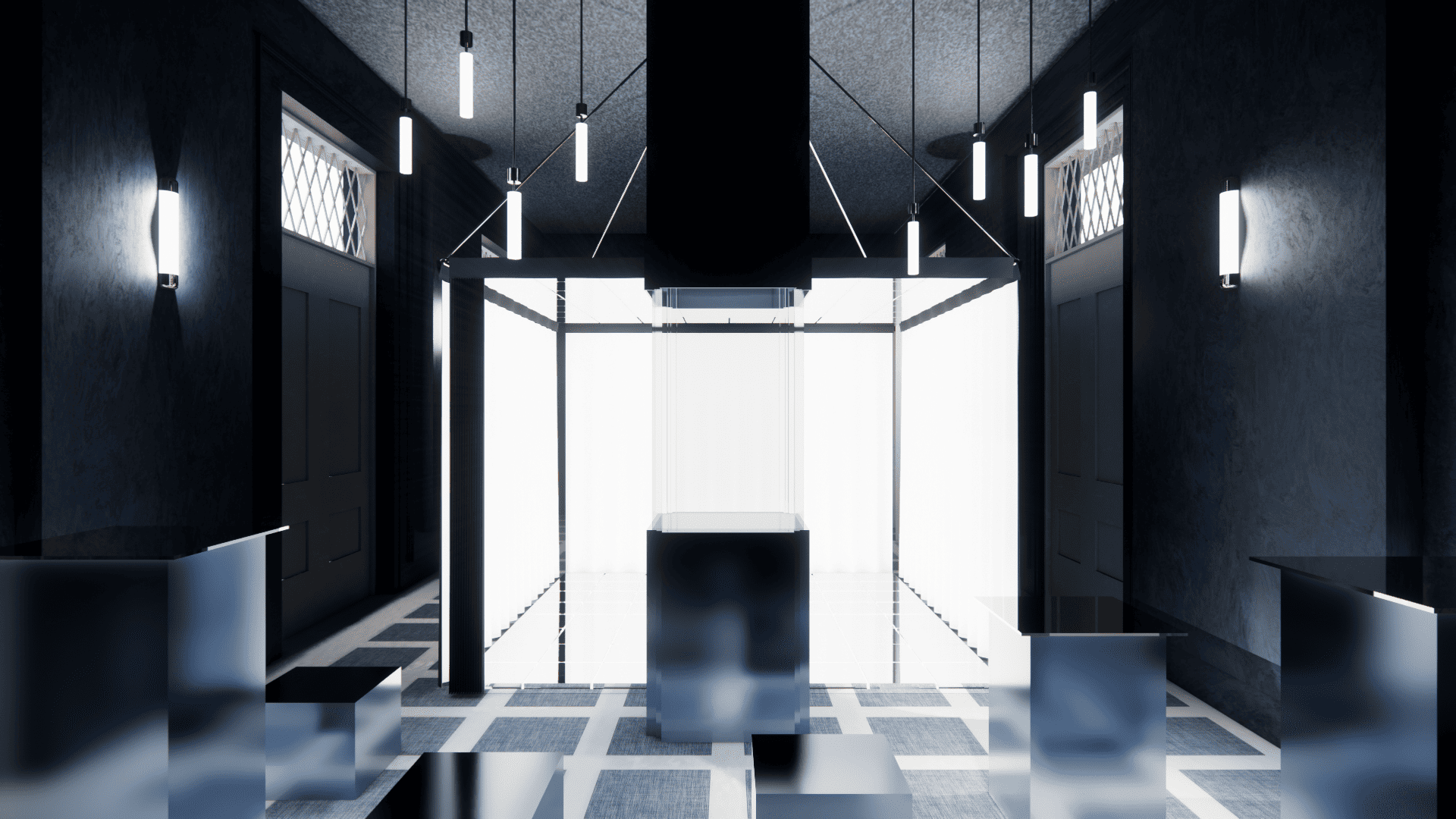
A Core for Multiple Uses
The central void allows for multiple usage scenarios, from private meditation to collective gathering, while the surrounding cubes provide flexible seating and surfaces for daily activities.
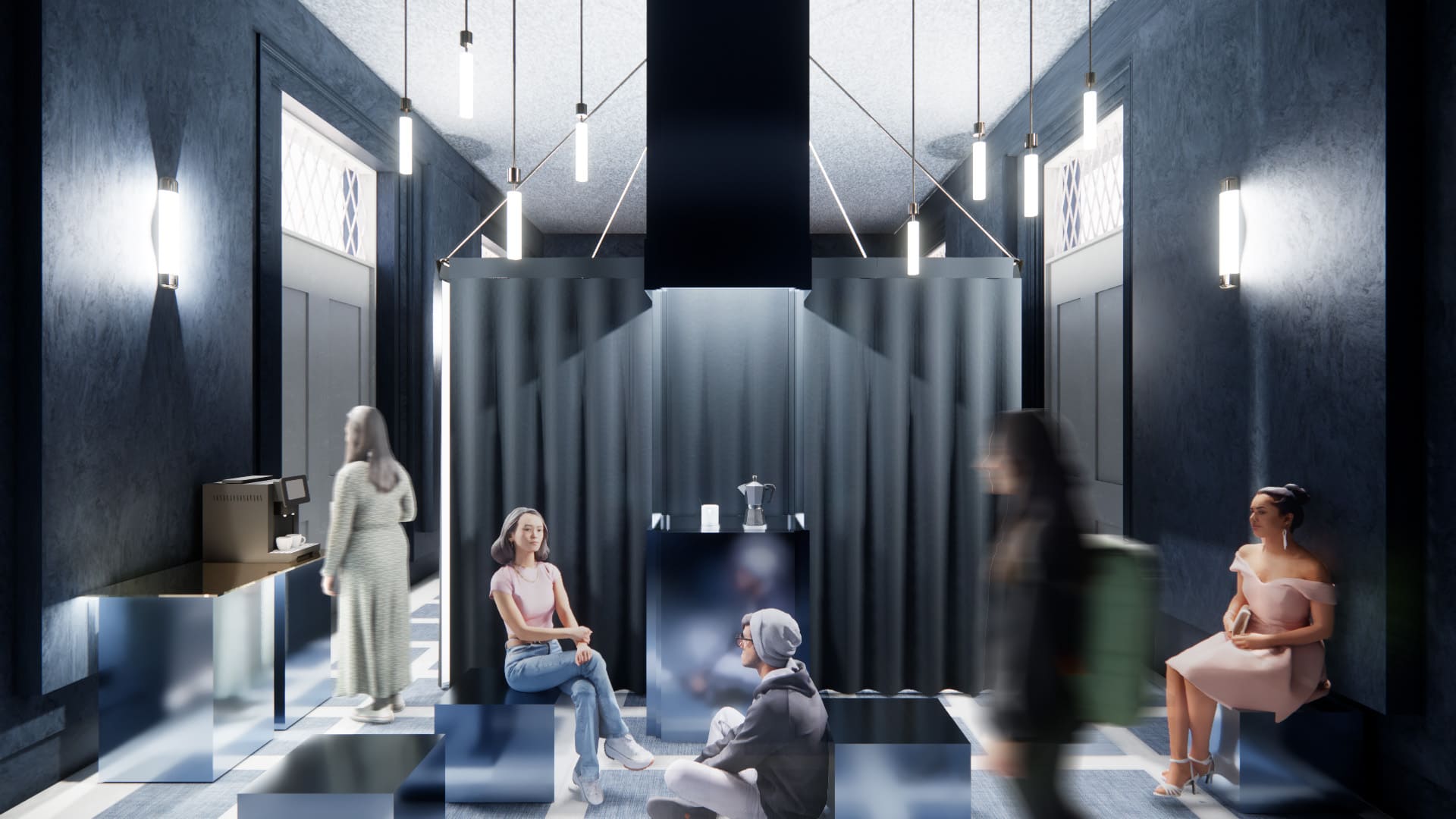
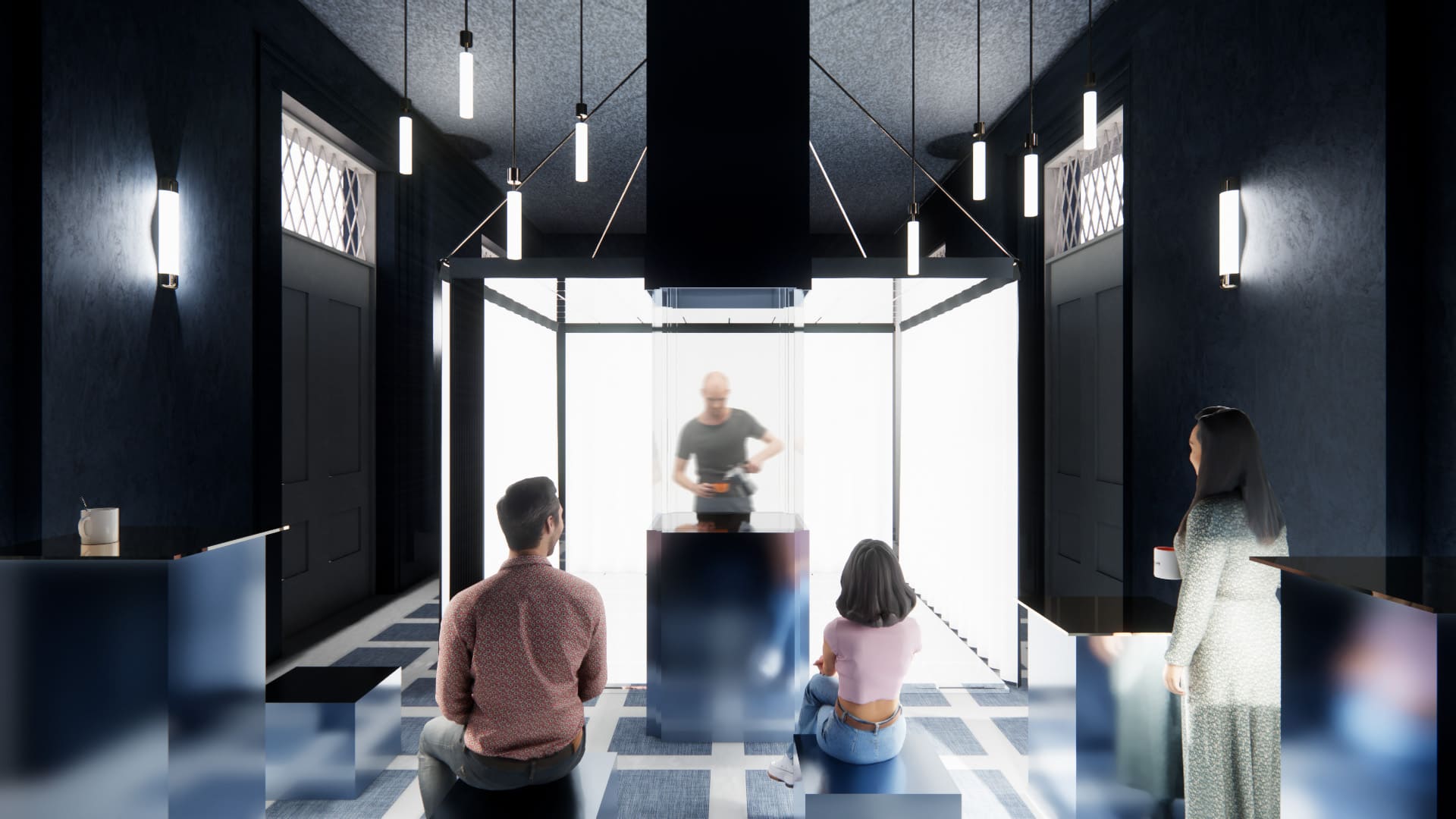
The KONG Space
This is the central empty space. Mirrors are installed above and below, creating a vertically infinite effect, giving the impression of entering a vast space for meditation.
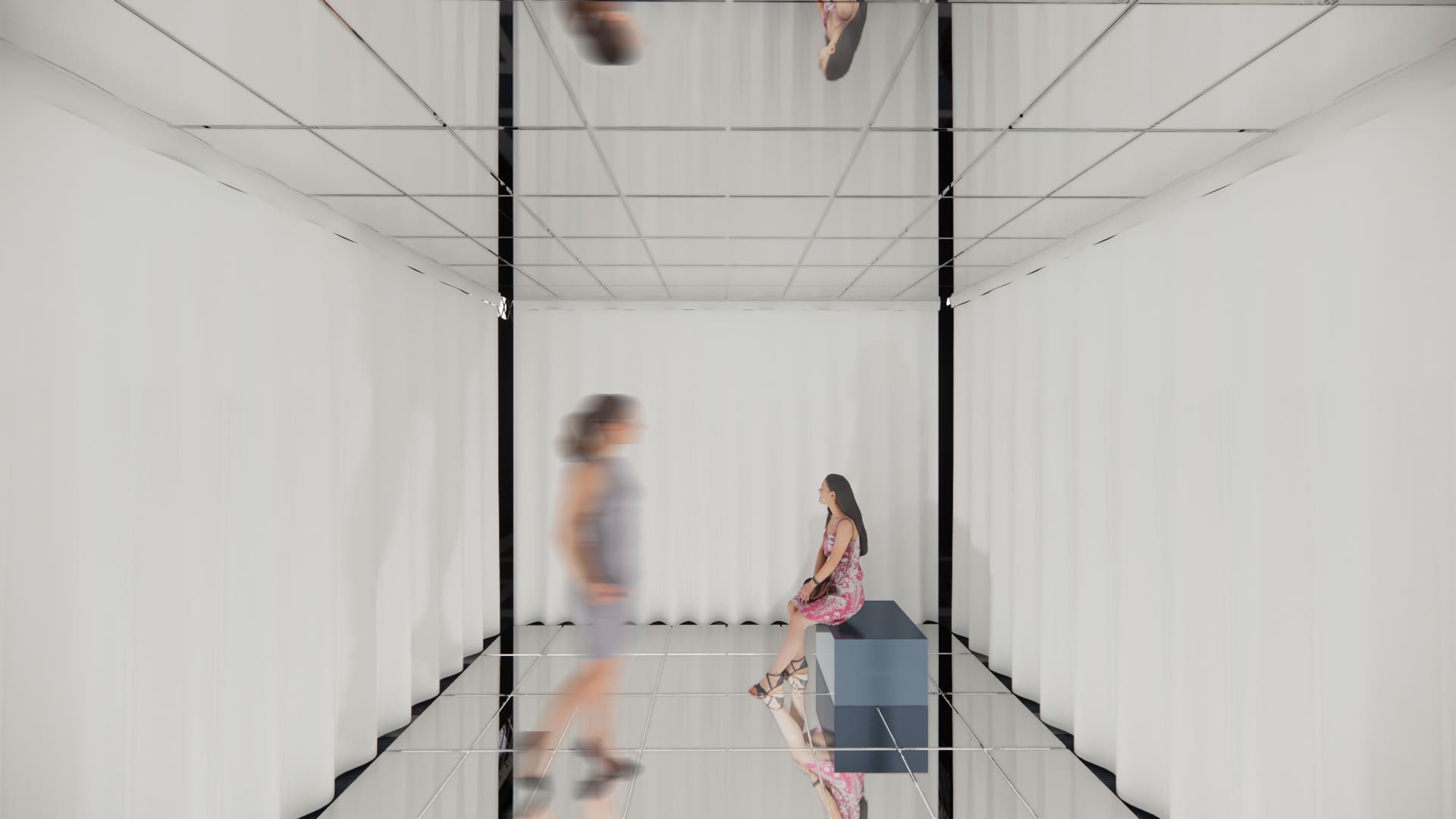
Material Atmosphere
Mirror-finished furniture reflects the surrounding space, adding richness and depth. The rough-textured flooring produces distinct sounds when furniture is moved or when people walk across it, creating an auditory experience.
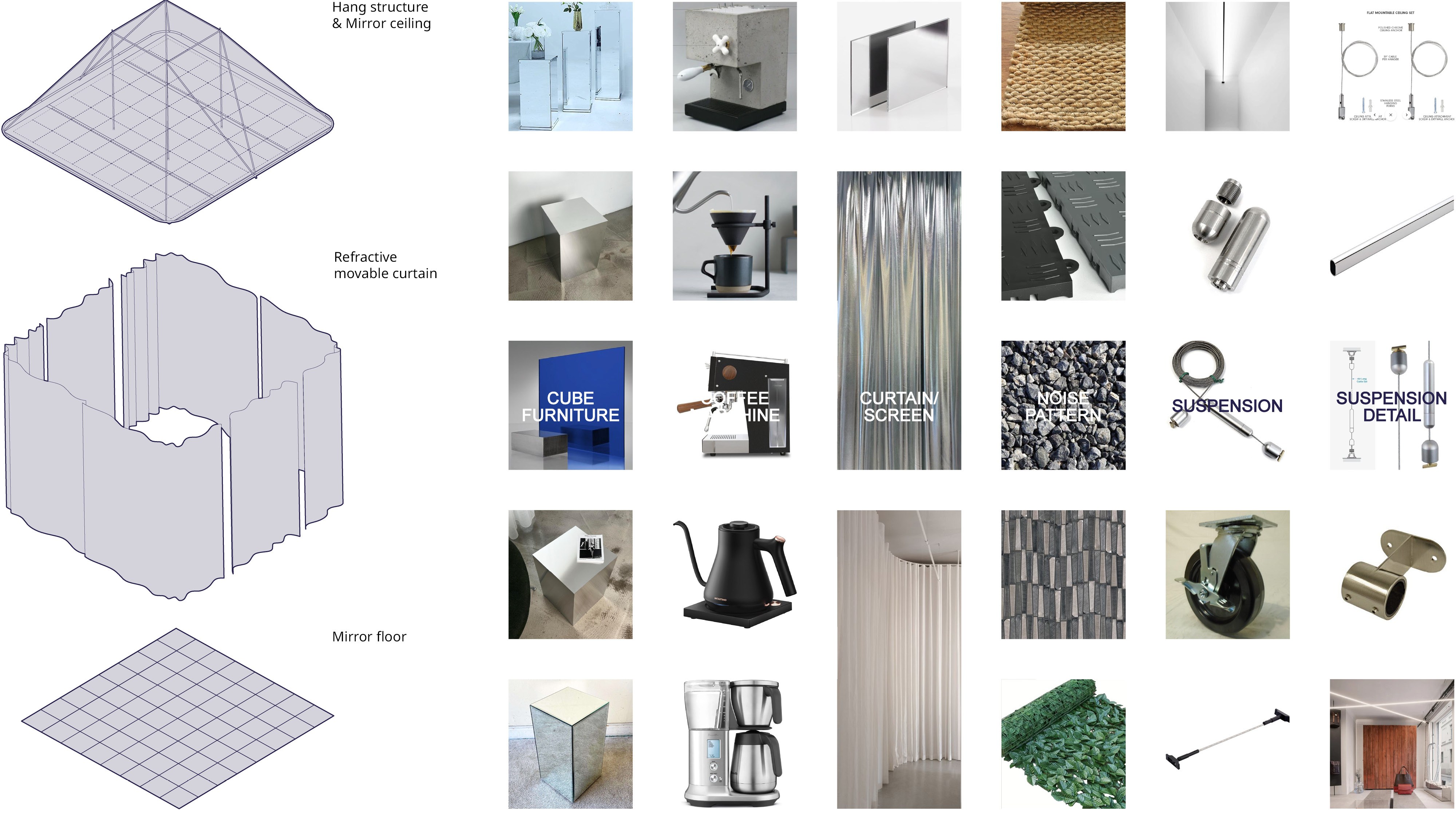
Product Design
The visual identity extends the spatial concept through everyday objects. Deep navy surfaces contrast with hollow white logos, echoing the idea of emptiness. The Colo Coffee pattern transforms into a dense graphic field, framing the void at the center.
